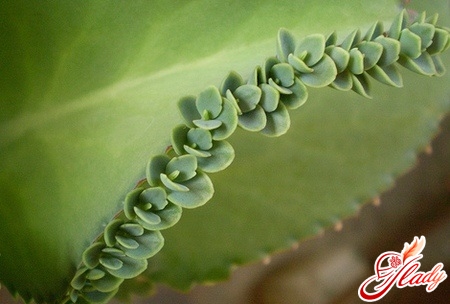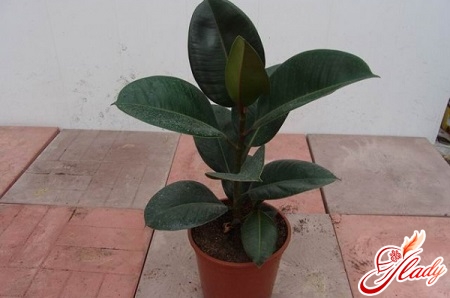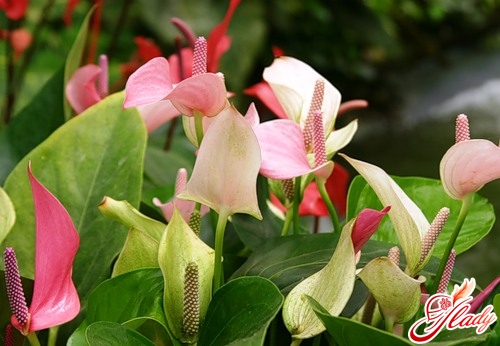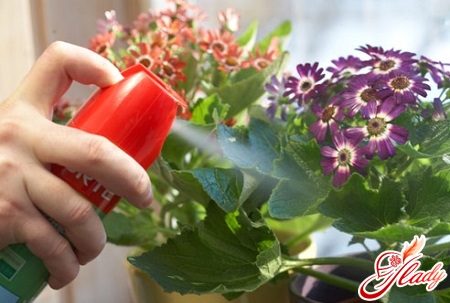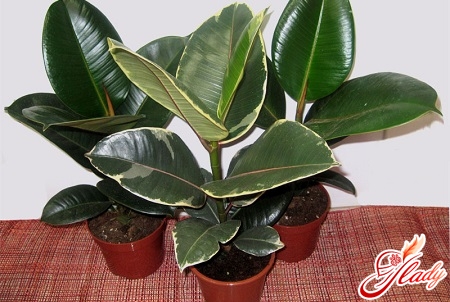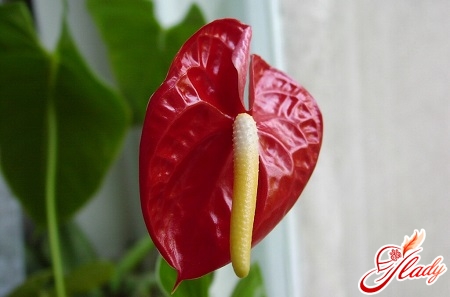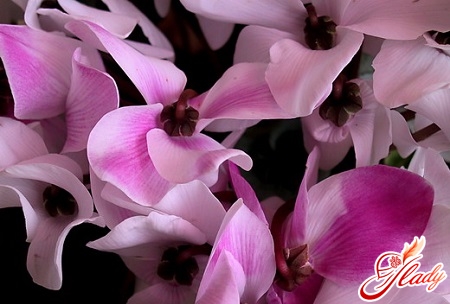 If you believe the ancient legend, it is in the formThe flower of the cyclamen decided to make his crown to King Solomon. Cyclamen liked the king with his unshakable beauty and became for him a reminder that modesty is the quality of a truly wise ruler. The flower of the cyclamen really resembles a crown - gentle petals grow on a long, elegant peduncle. It is not surprising that this charming touching plant has gained the sympathy of professional gardeners and amateur gardeners. Very often, different kinds of cyclamen (and in all about twenty) are also called "alpine violet". This is not entirely correct, since the alpine violet is only a European cyclamen or cyclamen blushing (purple). In the wild, as the name suggests, it occurs in the Alps. But in the room culture this kind of cyclamen is a great rarity. Only the most experienced flower growers will tell you where you can buy tubers and seeds of European cyclamen. European cyclamen are often confused with the so-called Cyclamen Persian - a larger plant with a relatively early period of flowering. And meanwhile, the "European" has characteristic features peculiar only to him. First, this is the only deciduous form of the cyclamen. When there is a period of rest, it ceases to grow, but does not discard leaves. Secondly, European cyclamen have smaller leaves and flowers. Leaves are rounded, slightly extended to the tip. The edges of the leaves are smooth. Thirdly, the flowers of the European cyclamen are usually bright pink. There are also very rare, so-called "alba-forms" - just white flowers or white with a raspberry eye. And finally, the flowers of the European cyclamen smell very nice; as the owners of the "Europeans" themselves write, the aroma varies from "simply pleasant" to "the fragrance of expensive spirits" and even "divine." The intensity of the aroma depends on the intensity of the color of the flower itself: the lighter the flower, the finer the flavor. It is interesting that on the day of opening the flowers may not smell at all, and the petals at first are very thin and pale. Over time, the aroma intensifies, and the petals gain color, straighten and thicken. It has already been mentioned above that, as a room flower, the "European" is now rare. So you are lucky if on the windowsill you have a real Alpine violet!
If you believe the ancient legend, it is in the formThe flower of the cyclamen decided to make his crown to King Solomon. Cyclamen liked the king with his unshakable beauty and became for him a reminder that modesty is the quality of a truly wise ruler. The flower of the cyclamen really resembles a crown - gentle petals grow on a long, elegant peduncle. It is not surprising that this charming touching plant has gained the sympathy of professional gardeners and amateur gardeners. Very often, different kinds of cyclamen (and in all about twenty) are also called "alpine violet". This is not entirely correct, since the alpine violet is only a European cyclamen or cyclamen blushing (purple). In the wild, as the name suggests, it occurs in the Alps. But in the room culture this kind of cyclamen is a great rarity. Only the most experienced flower growers will tell you where you can buy tubers and seeds of European cyclamen. European cyclamen are often confused with the so-called Cyclamen Persian - a larger plant with a relatively early period of flowering. And meanwhile, the "European" has characteristic features peculiar only to him. First, this is the only deciduous form of the cyclamen. When there is a period of rest, it ceases to grow, but does not discard leaves. Secondly, European cyclamen have smaller leaves and flowers. Leaves are rounded, slightly extended to the tip. The edges of the leaves are smooth. Thirdly, the flowers of the European cyclamen are usually bright pink. There are also very rare, so-called "alba-forms" - just white flowers or white with a raspberry eye. And finally, the flowers of the European cyclamen smell very nice; as the owners of the "Europeans" themselves write, the aroma varies from "simply pleasant" to "the fragrance of expensive spirits" and even "divine." The intensity of the aroma depends on the intensity of the color of the flower itself: the lighter the flower, the finer the flavor. It is interesting that on the day of opening the flowers may not smell at all, and the petals at first are very thin and pale. Over time, the aroma intensifies, and the petals gain color, straighten and thicken. It has already been mentioned above that, as a room flower, the "European" is now rare. So you are lucky if on the windowsill you have a real Alpine violet!
Care Cyclamen
It is believed that cyclamen is very demanding andmoody flower. Indeed, it can not be taken to unpretentious plants. It requires attention and care, but if you follow all the rules of caring for it, it will long please you with wonderful colors. It is important to remember that this flower does not tolerate direct sunlight, heat and drafts. It is best to grow cyclamens in a shady, cool place. According to experienced florists, you can achieve abundant flowering if you keep pots with cyclamen in the winter between the double windows frames, and in the hot season - on the balcony. But to the shape of the pot, as well as to the material from which it is made, European cyclamen are indifferent. Whether you will plant it in a round or square, plastic or ceramic pot - cyclamen will get accustomed to any. It is important to take into account the following: if a tuber has "babies", it is necessary to pick up a pot of such size that when grown, the "children" do not come across the pot wall, otherwise it can slow down their development. On average, the distance from the tuber to the pot wall should be two to three centimeters. Although in nature European cyclamen grow in the mountains, under coniferous trees, and in open terrain-that is, in different types of soil-they "agree" as room flowers to the standard substrate for cyclamens (humus, sand, leaf land and peat). At the bottom of the pot, fill a thin layer with drainage (small expanded clay or small ceramic shards). The substrate in which you plant a cyclamen tuber should be almost dry - a too moist substrate can lead to loss of leaves. You can fill the top layer of soil with pebbles, although not necessarily, because the tuber of the European cyclamen is buried in the substrate as a whole. So, we dig in the tuber, cover the pot with food film and put it in a cool, shaded place. Watering - the minimum. In the future, when watering, stick to one simple rule: before each subsequent watering the top layer of the substrate should dry up. If you do not comply with this rule, the stems of the buds can soften and rot. It may seem surprising, but experts are not recommended to feed European cyclamen with fertilizers. It is believed that if it is fertilized, it can die, as it becomes too susceptible to disease. Simply change the substrate every year or two. 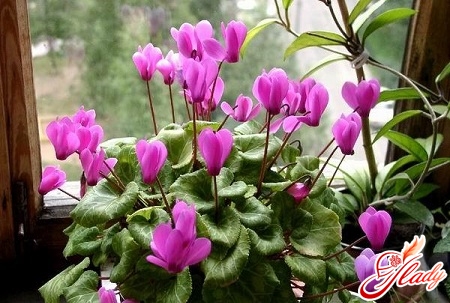
Reproduction of the European cyclamen
Cyclamen European breeds in two ways: either by dividing the tuber, or by seeds. Division of the tuber The tubers of the European cyclamen give processes of oblong form, the so-called "fingers". They are the same color as the tuber. If the processes are thin, do not worry, eventually they will become thicker. Thin shoots give very small leaves that open directly on the surface of the substrate. "Fingers" cut and planted in a separate pot. You can do this only during the rest period. Propagation by seeds The reproduction of European cyclamen by seeds is a more labor-intensive process. If a cyclamen tuber can be purchased at a store, then the seeds are obtained by polishing the flowers artificially. If the pollination has been successful, there are fruits - "boxes" with small seeds. Specialists believe that cyclamen should be in a room with a temperature of five degrees during the whole winter, only then the seeds will ripen. In no case should you touch and especially try to open a box with seeds on your own. If you are worried that when seeds are ripe, they can spill out into the pot, just place a piece of tissue under the capsules. Before sowing it is recommended to soak the seeds in water for twenty-four hours. Then they are sown in a pot at a distance of about two centimeters from each other and sprinkled with sand (they will not ascend in the light, so you can even cover the pots with seeds with a dark film). The earth should be regularly moistened, but not flooded. If the seeds are dried or poured with water, they will die, and with humidity races they can "fall asleep" and go into a state of rest. The most favorable temperature for germination of seeds is 16-18 degrees. Seeds should germinate four weeks after sowing, but to wait for flowering, you will have to be patient - flowers such a cyclamen will please you no sooner than in three or four years. But, as if in gratitude for your care and patience, the first flowering of the European cyclamen will be the most magnificent.
Diseases of the European cyclamen
Rotting tubers Possible cause of this problem -too much watering or getting water on the tuber itself. If you find the places of decay on the tuber, you can clean them and sprinkle (or even gently rub them) with crushed activated carbon. Deformation and discolouration of leaves Leaf deformity and discoloration of leaves can be caused by pests (eg, cyclamen mite). The infected plant must be isolated from other flowers and processed to destroy pests. Gray coating on leaves Gray coating on the leaves of European cyclamen means that your pet is affected by gray rot - a fungal disease caused by overmoistening of the soil, poor ventilation and moisture on the leaves during watering. Affected leaves must be removed, treated with fungicides, and further follow the rules of care for cyclamens. Yellowing of leaves The leaves of the European cyclamen turn yellow if it is kept in a room with too high a temperature, in a bright sun and does not provide enough watering. Falling leaves The leaves of the European cyclamen may begin to fall off when the lighting changes sharply. Pests The main pests of the European cyclamen are cyclamenic mites, aphids, thrips, weevils and slugs.
- With cyclamen ticks it is very difficult to fight: they are almost invisible and are found when the plant has already suffered greatly from their appetite. Spraying chemicals does not always help, so these pests are protected by already deformed (twisted) leaves or buds. You can treat the leaves with a mixture of agravertine (0.2%) and a solution of liquid soap (0.1%). It is better to make a mixture on acidified (for example, using orthophosphoric acid) water. Soap is needed for the mixture to "stick" to the leaves better. Sometimes such a mixture can cause burns, so start with a trial treatment of one or two leaves. Do not forget to treat the pot and destroy the eggs of the cyclamen mite. Treatment should be done three times, with a break in a week, at a temperature of 18 degrees.
- With aphids it is good to struggle with the help of the drug "Aktara". It is poured onto the substrate (it is not necessary to plant it), the plant is transferred to the upper irrigation (not through the pan), and after a few days the aphids disappear.
- Thrips are small insects (1mm), they strikeleaves, sucking out the juices. In this case, the leaves lose their color, and along the edges they are covered with a multitude of dots - traces from punctures by proboscis trunks. To destroy thrips, three times treatment with insecticides is necessary. Experts advise to use "Apache" or "Confidor".
- With weevils fighting too with the help of "Aktary""Apache" or "Confidor". As a rule, in cyclamens affected by weevils, the stem is easily separated from the tuber. If the problem is triggered, the plant will die.
- Slugs, fortunately, are more often the problem of thosecyclamens, which grow in the open ground. They rarely get into apartments. But if this does happen, they will have to be lured to the bait, and then collected by hand. If you use drugs from slugs, cyclamens may die.
Remember that when infected by any kind of pest, infected plants must be sent to the "quarantine" - to isolate from the healthy. 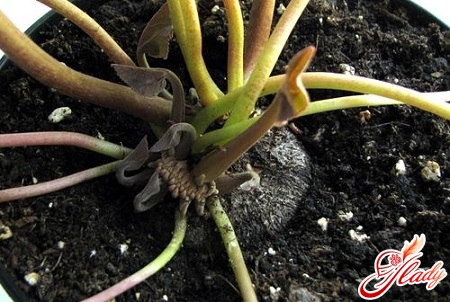
Use of medicinal properties of the European cyclamen
Cyclamen European is used in medicine withlong time ago. Its juice perfectly helps with colds, sinusitis, colds, diseases of the female reproductive system, neuralgia, rheumatism, radiculitis, liver diseases, intestinal colic. Treating sinusitis Squeeze the juice of one small cyclamen tuber, mix with boiled water (1:10) and daily dig in this solution in your nose two or three times. Juice cyclamen must be bred, otherwise you can get a burn of the nasal mucosa. Treatment of radiculitis Cub of cyclamen grind, pour vodka (1:10), allow to brew for a week and strain. Rinse the lower back. Treatment of diseases of the gastrointestinal tract Crushed tuber of cyclamen pour hot boiled water (1 tablespoon cyclamen for 500 ml of water), insist for about two hours, drain. Take a tablespoon three times a day after meals. When self-treatment with cyclamen, remember that it is sufficiently toxic and the use of its juice inside requires prior consultation with a doctor.
The magic properties of the European cyclamen
Even the ancient Romans believed that cyclamenprotect from evil and unkind forces. It is believed that cyclamen is able to ward off bad dreams, relieve anxiety and unreasonable fears, self-doubt and creative stagnation, protect against evil eye and envy. To cyclamen did not lose his magical power, it should be watered by adding water to the pallet. Keep cyclamen is best in the bedroom, near the bed, because it is in a dream person is more susceptible to the beneficial effects of this flower. If you believe the signs, the flowers of the cyclamen help to forget the unrequited or lost love, drowning out the feeling of sadness and melancholy. Cyclamen flowers can also help with infertility. Of course, cyclamen is a plant that requires careful care. But these gentle, touching flowers will be the decoration of your apartment. This Alpine spring on the windowsill - is not it wonderful?




